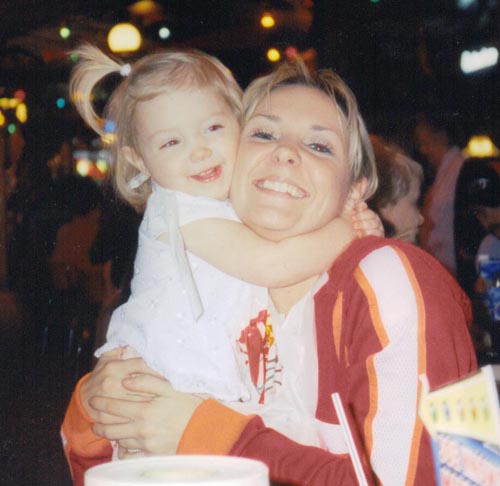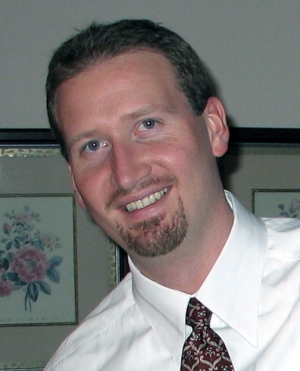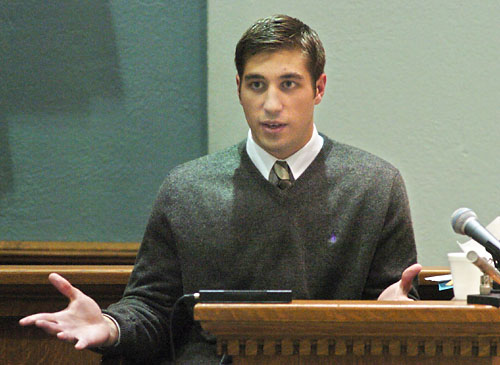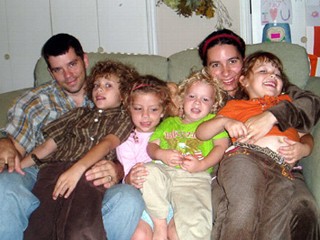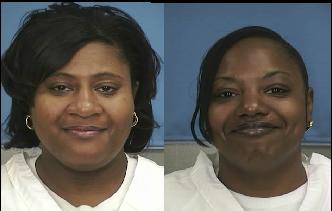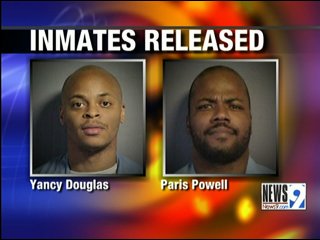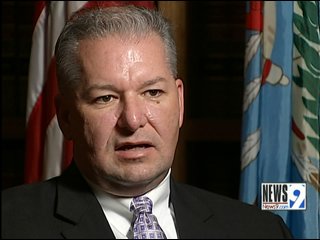Wrongful Convictions
The following links will take you to sites of people claiming to be wrongfully convicted. We take no responsibility for any information or opinions on these sites.
If there has been an update in any of these cases, or you have a case to add, please contact us.
In Appeals Process


.jpg)
Sadly, Larry lost his battle with cancer while fighting his wrongful conviction in prison. Our prayers are with his family as they overcome this tragedy.
Released
Exonerated
D.A. Dismisses 16-year-old Murder Case on Ethical Grounds
Yancy Douglas and Paris Powell were both cleared of murder
convictions in the 1993 killing of a 14-year-old girl.
The Oklahoma County D.A. said with no other witnesses and no other
evidence, his office had no way to prove the two men were the
gunmen.
The Justice Project
Two More Exonerations Stress the Need for Credible Evidence

October 12, 2009
By John F. Terzano
Two more innocent men have been freed from death row.
Just last week, Yancy Douglas and Paris Powell became the 137th and
138th people to be exonerated from death row. The two men were
convicted of a drive-by shooting in 1993 based on the testimony of
an in-custody informant who had been offered leniency from the
prosecution. The prosecutors at trial withheld information about
this plea-deal from the defense, which resulted in a new trial. All
charges against the two men have now been dropped because of the
unreliability of the in-custody informant’s testimony, the only
evidence that linked Douglas and Powell to the crime.
These exonerations highlight the power prosecutors have in securing
convictions by utilizing in-custody informant testimony, even when
no physical evidence links a defendant to the crime. Testimony by
in-custody informants or “jailhouse snitches” as they are often
referred, is a leading cause of wrongful convictions. With little to
lose, jailhouse snitches have great incentives to provide false
information to prosecutors in exchange for leniency or other forms
of compensation. Deals that are made between prosecutors and
jailhouse snitches do not often come to light when a jury has to
weigh the evidence is a case.
The exonerations of Douglas and Powell
demonstrate, yet again, the very real threat of false testimony and
the strong need for corroborating evidence to ensure that accurate
and credible testimony is presented to juries in criminal trials.
The fairness and accuracy of our justice system is at stake when
jurisdictions do not require mandatory, pre-trial disclosures of all
incentives given to in-custody informant witnesses, as recommended
in
In-custody Informant Testimony: A Policy Review.
Unfortunately, Douglas and Powell are not alone in their experiences
with a prosecution that withheld important evidence. Such acts are
the most common type of prosecutorial misconduct that leads to
wrongful convictions. The flawed trial that led to the wrongful
convictions and death sentences of Douglas and Powell, along with
the cases of the 136 death row exonerees before them, again
highlight the urgent need for reform to address the common causes
that lead to wrongful convictions. As exonerations continue to occur
throughout the country, it is abundantly clear reform is needed to
stem the tide of wrongful convictions and begin to restore
credibility, fairness, and accuracy to our criminal justice system.
According to deathpenaltyinfo.org, 8 Oklahomans
have been exonerated from death row as of August, 2008. DEATH ROW!
Dallas County Texas retested their DNA evidence in early 2008 and found
17 inmates who were wrongfully convicted! 17 inmates doesn't sound like
a large number, but we're not talking about inmates who had spent 30
days in prison or 3 years! Charles Chatman spent 27 years behind bars!
27 years! before DNA evidence cleared him. How many inmates do we have
with no DNA evidence available in their cases? How many wrongfully
convicted people do we have in our prisons? There has to be a better
way! These are lives we're talking about!!! And not just their lives,
but their families' lives as well!
These are stories of PEOPLE who were on death row in OKLAHOMA and were
released. Please read their stories.
Charles Ray Giddens Oklahoma Conviction: 1978, Charges Dismissed: 1981 *
Giddens, an 18-year-old black man, was convicted for the murder of a
grocery store cashier primarily on the testimony of Johnnie Gray, who
claimed he accompanied Giddens to the murder scene. Although Gray was
never indicted, Giddens was sentenced to death after an all white jury
deliberated for only 15 minutes. Giddens conviction and death sentence
reversed by the Oklahoma Court of Criminal Appeals, which found Gray's
testimony was unreliable and the evidence against Giddens insufficient.
(Giddens v. State, No. F-78-164 (Ct. of Crim. App., 11/17/81)) The
charges against Giddens were dropped.
Clifford Henry Bowen Oklahoma Conviction: 1981, Charges Dismissed: 1986
Bowen was incarcerated in the Oklahoma State Penitentiary under three
death sentences for over five years when the U.S. Court of Appeals for
the Tenth Circuit finally overturned his conviction in 1986. The Court
held that prosecutors in the case failed to disclose information about
another suspect, Lee Crowe, and that had the defense known of the Crowe
materials, the result of the trial would probably have been different.
Crowe resembled Bowen, had greater motive, no alibi, and habitually
carried the same gun and unusual ammunition as the murder weapon. Bowen,
on the other hand, maintained his innocence, provided twelve alibi
witnesses to confirm that he was 300 miles from the crime scene just one
hour prior to the crime, and could not be linked by any physical
evidence to the crime. (Bowen v. Maynard, 799 F.2d 593 (10th Cir. 1986)
and Oklahoma Publishing Co., 7/31/87).
Read "Cowboy Bob..." by Ken Armstrong in The Chicago Tribune
Richard Neal Jones Oklahoma Convicted 1983 Acquitted 1988
Jones was sentenced to death in Oklahoma in 1983. Jones maintains that
he was passed out while his three co-defendants murdered Charles Keene.
On appeal, the Court of Criminal Appeals of Oklahoma remanded the case
for retrial. The Court held the jury was prejudiced by the improper
admission of hearsay testimony and inflammatory photographs. The Court
also agreed with Jones' assertion that the case should be remanded on
the basis of prosecutorial misconduct. Moreover, the Court held, the
case was not one in which Jones' guilt was "overwhelming" and that
Jones' involvement was disputed by the evidence. (Jones v. State, 738
P.2d 525 (Okla. crim. app. 1987) and Oklahoma Publishing Co., 1/18/88).
Gregory R. Wilhoit Oklahoma Conviction: 1987, Acquitted: 1993
Convicted of killing his estranged wife while she slept. His conviction
was overturned and he was released in 1991 when 11 forensic experts
testified that a bite mark found on his dead wife did not belong to him.
The appeals court also found ineffective assistance of counsel. He was
acquitted at a retrial in April, 1993. (Wilhoit v. State, 816 P.2d 545
(Okla. Crim. App. 1991) and The Daily Oklahoman, 4/1/93).
Read "My Nightmare: An Interview with Greg Wilhoit" by Ira Saletan
Robert Lee Miller, Jr. Oklahoma Conviction: 1988, Charges Dismissed:
1998*
Miller was convicted of the rape and murder of two elderly women in
1988. In 1995, Miller's original conviction was overturned and he was
granted a new trial when DNA evidence pointed to another suspect who was
already incarcerated on similar charges. In February, 1997, Oklahoma
County Special Judge Larry Jones dismissed the charges against Miller,
saying that there was not enough evidence to justify his continued
imprisonment. One month later, Oklahoma County District Judge Karl Gray
reinstated the charges in response to an appeal by the District
Attorney's office; however, the prosecution ultimately decided to drop
all charges and Miller was released. (Barry Scheck, et al., Actual
Innocence (Doubleday 2000) and The Daily Oklahoman, 3/1/97).
Read "When the Evidence Lies" by Belinda Luscombe in Time Magazine
Ronald Keith Williamson Oklahoma Conviction: 1988, Charges Dismissed:
1999
Ronald Williamson and Dennis Fritz were charged with the murder and rape
of Deborah Sue Carter, which occurred in Ada, Oklahoma in 1982. They
were arrested four years after the crime. Both were convicted and
Williamson received the death penalty. In 1997, a federal appeals court
overturned Williamson's conviction on the basis of ineffectiveness of
counsel (Williamson v. Ward, 110 F.3d 1508 (10th Cir. 1997) aff'g 904 F.
Supp. 1529 (E. D. OK 1995)). The Court noted that the lawyer had failed
to investigate and present to the jury the fact that another man had
confessed to the crime. The lawyer had been paid a total of $3,200 for
the defense. Recently, DNA tests from the crime scene did not match
either Williamson or Fritz, but did implicate Glen Gore, a former
suspect in the case. All charges against the two defendants were
dismissed on April 15, 1999 and they were released. Williamson suffers
from bipolar depression and has been hospitalized for treatment. (Daily
Oklahoman, 3/18/99 and New York Times 4/16/99).
Read "Life After Death Row" by Sara Rimer in The New York Times Magazine
See Frontline: Burden of Innocence by PBS ---- Williamson is currently
deceased
Curtis Edward McCarty Oklahoma Conviction: 1986, Charges Dismissed: 2007
McCarty, who had been sentenced to die three times and has spent 21
years on death row for a crime he did not commit, has been released
after District Court Judge Twyla Mason Gray ordered that the charges
against him be dismissed. Gray ruled that the case against McCarty was
tainted by the questionable testimony of former police chemist Joyce
Gilchrist, who gave improper expert testimony about semen and hair
evidence during McCarty's trial. Oklahoma County District Attorney David
Prater said his office will not appeal Gray's decision. According to the
New York-based Innocence Project, an organization that assisted McCarty
in his efforts to prove his innocence, during McCarty’s first two
trials, Gilchrist falsely testified that hairs and other biological
evidence showed that McCarty could have been the killer. In both trials,
the juries convicted him and he was sentenced to death. In Gilchrist’s
original notes, hairs from the crime scene did not match McCarty. She
then changed her notes to say the hairs did match him. When the defense
requested retesting, the hairs were lost. A judge has said Gilchrist
either destroyed or willfully lost the hairs. DNA testing in recent
years has also shown that another person raped the victim. McCarty's has
maintained his innocence since his arrest.
(The Oklahoman, May 11, 2007 and The Innocence Project)
Average number of years between being sentenced to death and
exoneration: 9.5 years
Number of cases in which DNA played a substantial factor in establishing
innocence: 17
Released and Waiting for Exoneration
Articles
Article - Prosecutors Target Wrongful Convictions
By Peter Slevin and Kari Lydersen
Washington Post Staff Writers
Monday, April 28, 2008
CHICAGO -- Tabitha Pollock was asleep when her boyfriend killed her 3-year-old daughter. Charged with first-degree murder because prosecutors believed she should have known of the danger, Pollock spent more than six years in prison before the Illinois Supreme Court threw out the conviction.
"Should have known," the high court ruled, was not nearly enough to keep Pollock behind bars.
Five years later, Pollock remains in limbo, freed from prison but not free from the snags of a wrongful conviction that upended her life. With a felony record, she cannot become a teacher, as she wants. She cannot collect damages from the Illinois government. On a trip to Australia, where customs officials questioned her when she arrived, she learned that the murder conviction always follows her.
To fully clear her name, Pollock -- as well as a dozen or so other former Illinois inmates who have been exonerated -- needs an official pardon, which only the governor can give. She applied in 2002 but has received no word.
"I was raised to believe America is a wonderful country, but I have serious doubts about Illinois now," said Pollock, 37. "This whole experience has taught me not to have any hopes or dreams."
A spokesman for Gov. Rod Blagojevich (D) said last month that the governor is flooded with petitions and has not had time to focus on Pollock's case.
Pollock's predicament is becoming more common across the country as more people are exonerated. The New York-based Innocence Project has tallied 215 wrongful convictions in the United States that have been reversed on the basis of DNA evidence.
Many of those former prisoners are seeking redress from the governments that mistakenly jailed them -- but they are kept waiting, whether because of the slow pace of bureaucracy or a lack of procedures or political will to handle their cases.
When the authorities do not certify innocence, "in effect, the sentence just goes on," said Stephen Saloom, policy director of the Innocence Project. Noting that legislators are recognizing "the lingering problems" of the exonerated after their release, he said 22 states and the District provide official compensation in one form or another.
"A recent trend is not only to compensate at a monetary value per year incarcerated, but also to provide immediate services upon release," said Saloom, who said the project's clients spent an average of 11 years in prison. Advocates say the exonerated need help making the transition back into society, especially finding a job.
"It's not enough to let the person out of prison," Saloom said.
Alabama pays exonerated ex-prisoners $50,000 for each year they were incarcerated. New Jersey pays $40,000 or twice the inmate's previous annual income. Louisiana offers $15,000 a year plus counseling, medical care and job training, according to Northwestern University's Center on Wrongful Convictions.
In Illinois, to regain a certifiably clean record and collect compensation -- a lump payment of $60,150 for five years or less in prison, or $120,300 for six to 14 years -- an exonerated inmate must obtain a "pardon based on innocence" from the governor. A 15-member state review board interviews the petitioners and makes a recommendation, but the governor is not obligated to make a decision.
"The governor is not acting on them," said Karen Daniel, senior staff lawyer with the Center on Wrongful Convictions, which is pressing Blagojevich to decide on Pollock's case and others. "In most of these cases, it's really not a hard decision. Sometimes there's still some controversy left after the conviction is thrown out, but in most of these cases there is no disagreement."
Illinois law gives exonerated former prisoners fewer services than paroled convicts. A bill recently passed by the Illinois House and now under consideration by the Senate would change that, while allowing cleared inmates to receive a "certificate of innocence," which would have the same power as a pardon, without going to the governor.
Robert Wilson's experience with the Chicago courts was a case of mistaken identity. He spent nine years behind bars for another man's crime, and it haunts him still.
On Feb. 28, 1997, someone slashed June Siler, 24, with a box cutter as she waited for a bus on Chicago's South Side. The next day, at the same bus stop, police arrested Wilson. Interrogated for nearly 30 hours, he signed a written confession and was charged with attempted murder.
Wilson pleaded not guilty, but Siler pointed him out in court as the man who cut her face and throat. What the jury did not know was that five other victims -- all white, as Siler was -- were attacked and slashed at Chicago bus stops in the two weeks after Wilson's arrest. The slasher was caught and confessed, but police never asked him about the Siler case.
Nine years later, on an appeal filed by the Northwestern team, a court ruled that the jury should have been told about the other cases. Siler came forward and said she had fingered the wrong man.
Wilson, at long last, was free. Yet he left prison with few prospects and deeply in debt because he was assessed child support for his three boys while behind bars. These days, his boys are teenagers and he is "barely making it."
"I feel so bad, I figure I would be better off back in the penitentiary," said Wilson, 52. "Whenever I apply for a job, they see the criminal record and say no. I'm not asking for welfare or a handout; just give me what I deserve."
Marlon Pendleton is also bitter. In 1993, a rape and robbery victim picked him from a police lineup. His attorneys believe that the victim was influenced by seeing Pendleton in handcuffs before she viewed the entire group. Although he repeatedly asked for DNA testing, he was told it would be impossible.
In 2006, a DNA test established his innocence and Pendleton went free. But he has not been pardoned, has not received compensation and has not seen the conviction wiped off his record. Unable to meet the mortgage, his family lost his late mother's home in Gary, Ind. He says his children are suffering.
"I can't get a job," Pendleton said. "Every time I fill out an application, it comes up. What can you do with a prison record and a not very good education? Life has been a living hell."
Daniel, the Northwestern lawyer, said the number of exonerated inmates "probably seems small" in a nation with 2 million people behind bars. "But to me, it's important."
"It's just an enormous wrong we've inflicted on these people, not necessarily intentionally," Daniel said. "His possessions are gone, job is gone, family members are often gone. There's little worse a government can do to a person. We can't in good conscience have a so-called criminal justice system unless we make people whole when we screw up."
One of Daniel's clients is Marcus Lyons, a former Navy Reservist and aspiring computer programmer who spent three years in prison on an erroneous sexual assault conviction.
Lyons was so distraught that after his release in 1991, he tried to nail himself to a cross outside the DuPage County Courthouse.
DDNA evidence cleared him last year. He is still waiting for the Illinois government to make amends.

